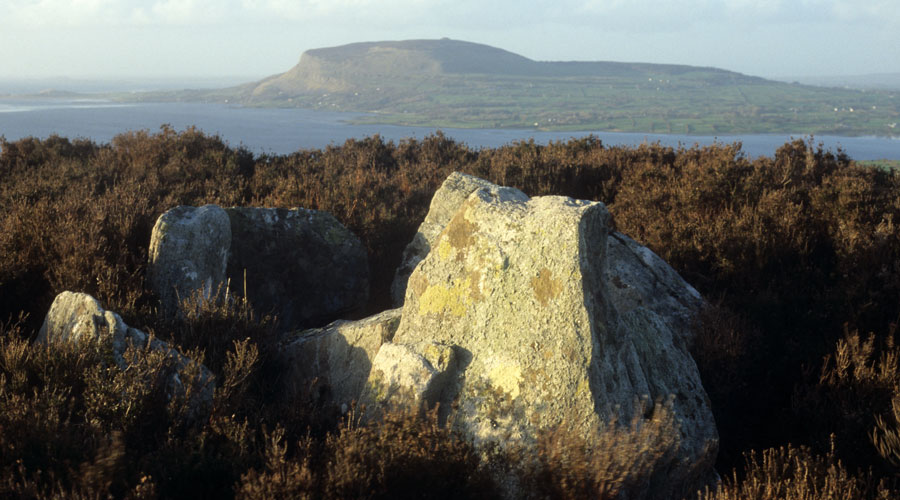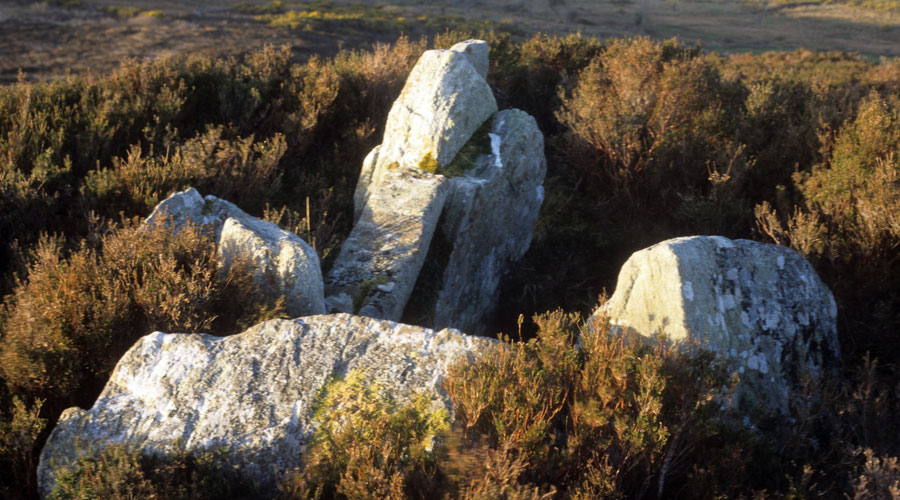Croghaun passage-grave
The Croghaun passage-grave is located on the tiny summit of a cone-shaped peak in the Ox Mountains eight kilometers south of Knocknarea. This small monument, with a diameter of only seven meters and a chamber of less than two meters in length, occupies the whole of the small summit. The chamber is about the same size and shape as many of the monuments at Carrowmore, and the chamber of Cairn O in Carrowkeel.
The monument, which was probably a tertre, the earliest form of passage-grave found in Ireland - a round flat platform with a central, free-standing burial chamber. Croughan was known locally as Diarmud and Grainne's bed, a name commonly given to megalithic monuments, referring to the myth of Diarmuid and Grainne from the Fenian cycles. The area between Croughan and Doomore and the sea is one of the most mythological areas in Ireland, a place mentioned many times in the old annals and manuscripts, Traigh Eothaile, where Eochy, High King of the Fir Bolg died at the end of the First Battle of Moytura. Eochy's cairn, located in Ballisodare Bay, was one of the most famous ancient sites in Ireland, and was considered to be the thirteenth wonder of the world to the medieval annalists.
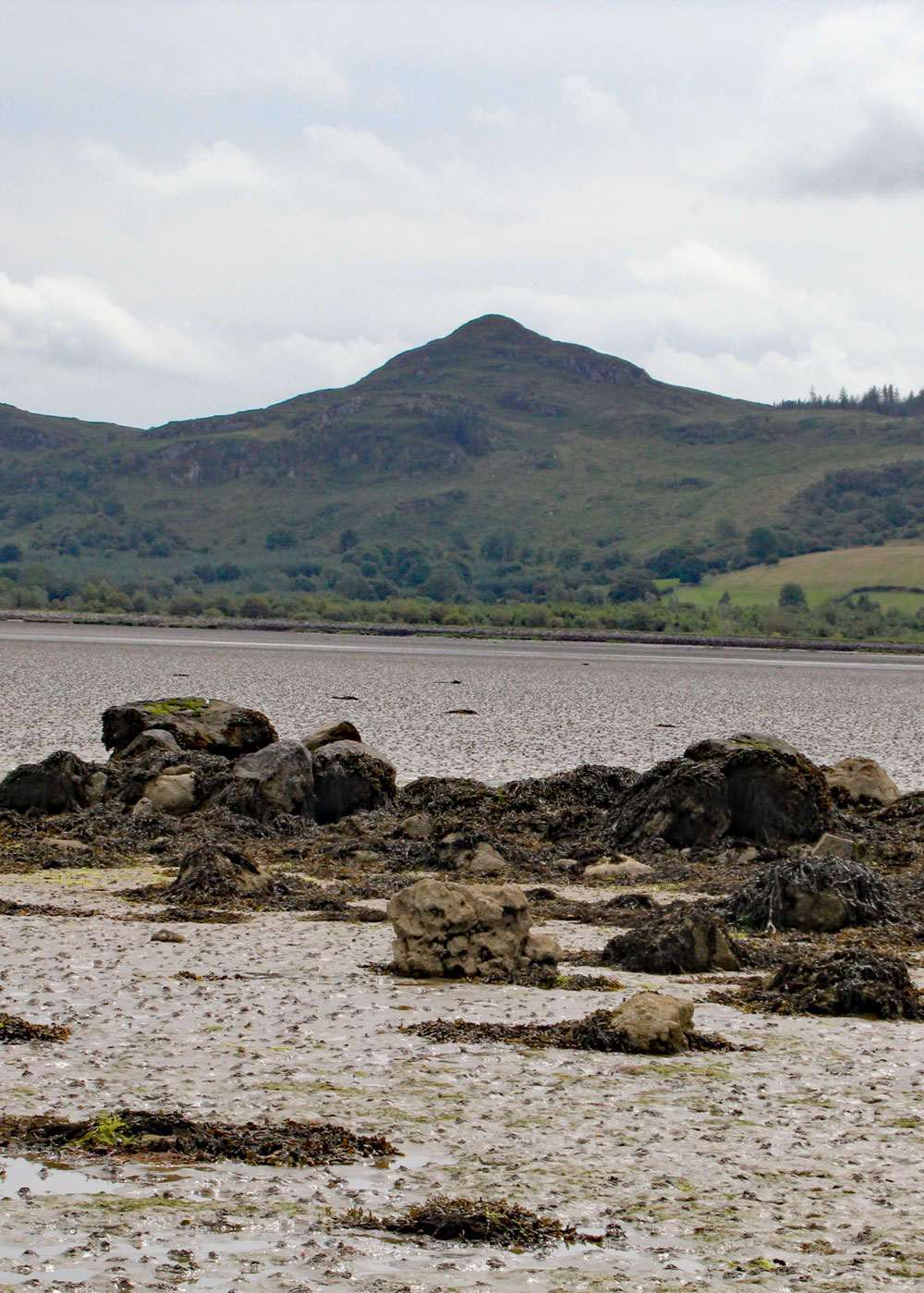
The gneiss summit, a part of the Ox mountain range, is covered with a thick layer of heather and bog, which has grown since the monument was constructed. One of the reasons that the monument builders were attracted to this hill may be that white quartz is plentiful here, and much of the quartz used in Sligo in ancient times may have been quarried in this location. The southern side of the hill is enclosed by a partial wall which may well date to the neolithic.
Archaeologist Stefan Bergh excavated a trench across this chamber in 1985, and recovered cremated human remains, an antler pin, and charcoal which produced extremely early Radiocarbon dates, stretching back over 7,500 years. While the megalithic monument itself probably dates to around 3,500 BC, the charcoal may well indicate that the hilltop was used for fires during the mesolithic, long before the Anatolian farmers arrived in Sligo, where they constructed the early causewayed enclosure at Magheraboy around 4,200 BC. It is widely recognised that many megalithic structures, passage-graves in particular, are build on older sites.
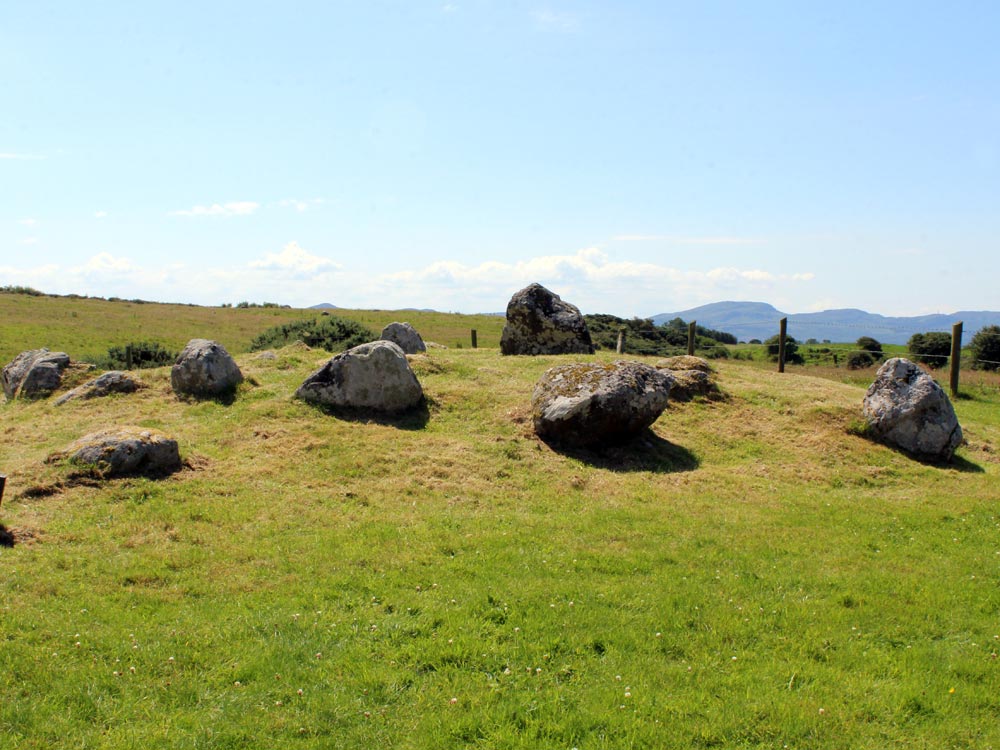
Megalithic Survey Report
Some two kilometers south of Ballysadare Bay on the narrow summit of Croaghaun Mountain which commands an extensive outlook in all directions. A southeast-facing undifferentiated passage tomb of rectangular outline (Length 1.7 meters; Width 0.95 meters) stands in a circular cairn (diameter seven meters; Height c. 0.6 meters). Three stones form the left-hand side of the structure, one stone of a probable original three stands at the right-hand side and it is closed by a backstone. A sillstone stands at the front of the chamber.
The site was excavated in 1985 (Bergh 1986, 35; Bergh 1995, 104-5, 225). Cremated human bone was found in the chamber and also a fragment of a poppy-headed antler/bone pin, one piece of chert with wear-marks and fragments of a coarse ware pottery. Five minor deposits of cremated bone were found in the cairn with one of which there were sherds of food vessel type. A hollow scraper made of chert was also found in the cairn. During the excavation two displaced slabs, likely to have been chamber roofstones, were found south and west of the structure.
Radiocarbon dating of charcoal from an in situ cremation suggest it was deposited in the interval 5640 to 5490 BC (calendar years). This date is much earlier than would be expected for a passage-tomb so it may be that charcoal already many centuries old somehow became associated with the burial deposit. Charcoal associated with cremated bone in another part of the chamber has been dated to the interval 4675-4460 cal. BC. This date too, according to the excavator, presents 'problems of interpretation'.
A prehistoric wall (Width 3-8 meters; Height c. one meter; Length c. 175 meters) of large boulders, which may have been associated with the passage tomb, lies c. 130 meters to south where it curves around the base of the mountain roughly southeast-southwest.
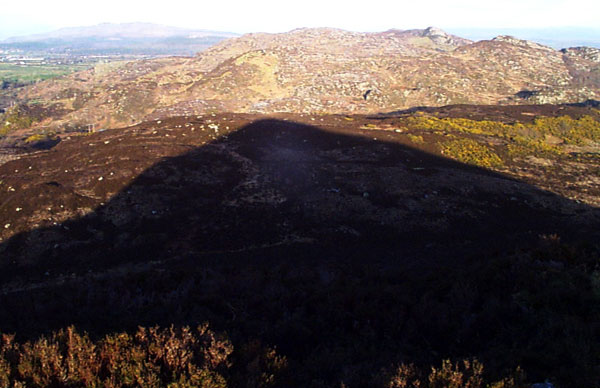
Sitting on the summit of Croughan is somewhat like being on the top of a natural pyramid, with the sides of the hill falling away steeply in all directions. There is a tremendious view from the tiny chamber, which is 170 meters above sea level. Many important neolithic sites are intervisible from here: Carrowkeel and Kesh Corran, Knocknashee and Muckelty Hill, Doomore Cairn nearby, Knocknarea, Carrowmore and Carns Hill, and the group of cairns on Sliabh Da Ean to the east.
While visiting one evening near sunset close to an equinox in the late 1990's, I was lucky to witness the shadow projected by the cone shape of Croughan. The mountain casts a pyramidal shadow, like a huge pointer, which stretches out and becomes longest at sunset.
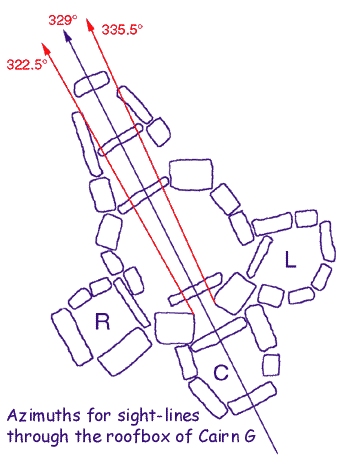
Croughan serves as a marker for the extreme setting point of the moon during the lunar standstills, which occur every 18.6 years. Croughan is visible from several of the chambers at Carrowkeel, and the roofbox in Cairn G seems specifically designed to monitor the extreme movements of the sun and moon at midsummer and midwinter, and may have been used to predict eclipses. The axis of the chamber of Cairn G is aligned directly to the peak of Croghaun, which means that this monument, which is currently considered to have an inaccurate alignment to the midsummer solstice sunset, is precicely aligned to the northern setting lunar standstill.

